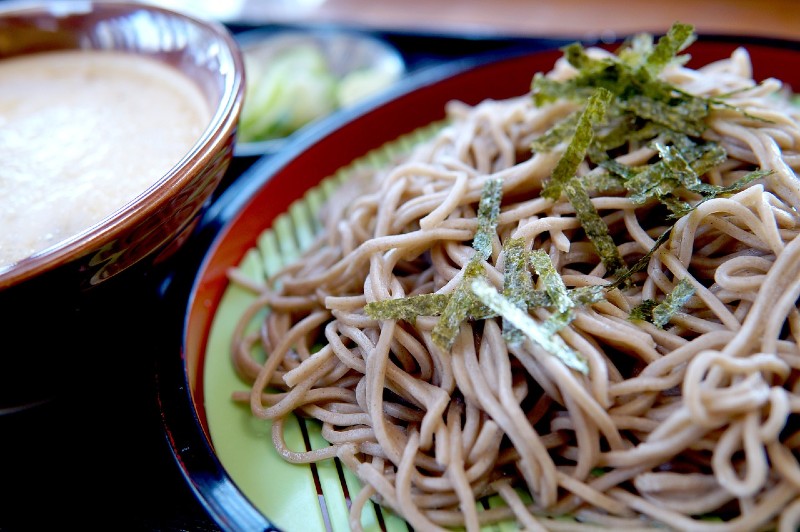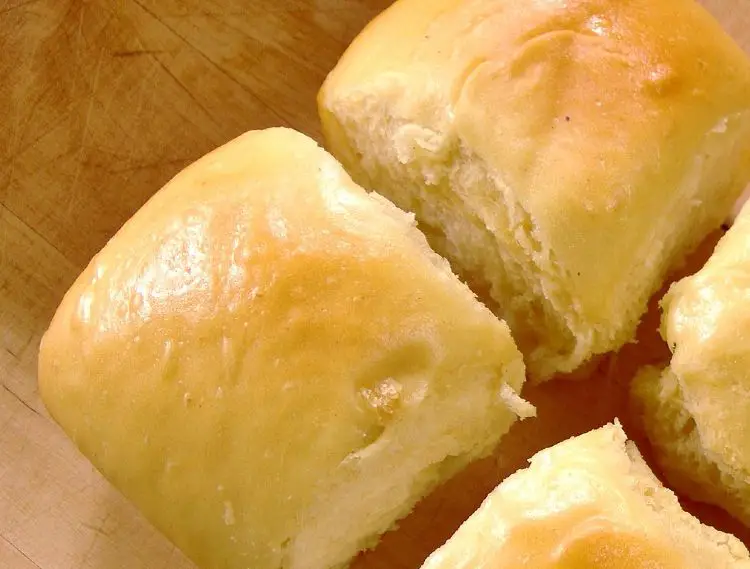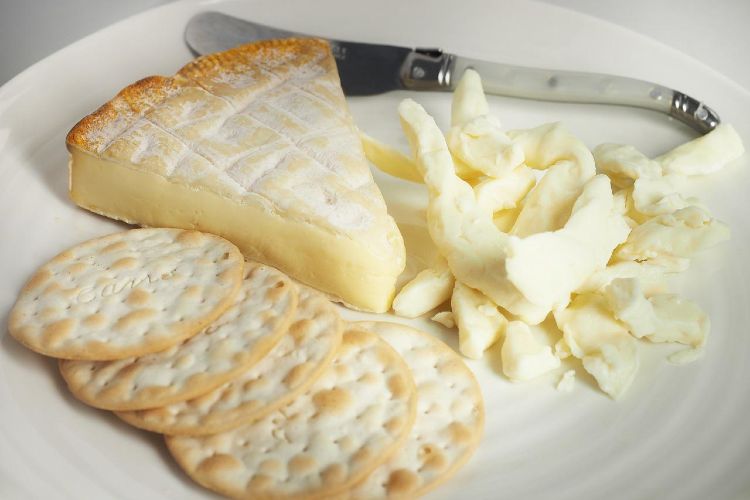From Zoodles to Quinoa: Your Guide to Soba Noodle Alternatives!
Soba noodles, a staple of Japanese cuisine, have gained global popularity for their distinct flavor, satisfying texture, and potential health benefits. Made primarily from buckwheat flour, soba noodles offer a nutty and earthy taste that complements a variety of dishes.
However, dietary preferences, allergies, and culinary creativity often call for suitable substitutes that can mimic the qualities of soba noodles while catering to individual needs.
This article serves as a comprehensive guide to soba noodle substitutes, presenting a diverse array of options to suit different tastes and dietary requirements. Whether you’re looking to reduce carbs, adhere to a gluten-free diet, or simply explore new flavors, this guide will help you discover alternatives that seamlessly integrate into your favorite dishes.
Factors to Consider When Choosing Substitutes
When selecting soba noodle substitutes, it’s important to consider several factors to ensure that the chosen alternative aligns with your preferences and dietary requirements. Each substitute brings its own unique flavor, texture, and nutritional profile to the table. Here are the key factors to keep in mind:
Flavor and Texture Comparison
Soba noodles have a distinct nutty flavor and a satisfying chewy texture. When exploring substitutes, consider whether you want to replicate these qualities closely or if you’re open to trying something with a different taste and mouthfeel.
Nutritional Content and Dietary Requirements
Evaluate the nutritional content of the substitute in relation to your dietary goals. If you’re seeking a low-carb option, look for substitutes that are naturally lower in carbohydrates. For those with gluten sensitivities, gluten-free alternatives will be essential. Additionally, consider the protein, fiber, and micronutrient content to ensure the substitute aligns with your nutritional needs.
Cooking Methods and Adaptability
Some substitutes may require specific cooking techniques to achieve the desired texture and taste. Consider whether the substitute easily integrates into your cooking routine and the types of dishes you enjoy preparing. A versatile substitute should work well in stir-fries, salads, soups, and other recipes.
Availability and Accessibility
Availability of substitutes can vary depending on your location. While some alternatives might be easily accessible, others could be more niche and challenging to find. It’s important to consider the practicality of sourcing the substitute ingredients.
List of Soba Noodle Substitutes
Udon Noodles
When delving into the world of Japanese noodles, one cannot overlook udon. Thicker and chewier than soba, these white, wheat-based noodles offer a distinct culinary experience.
Best Dishes to Use as a Substitute
- Warm Broths: Udon shines in hot soupy dishes. Its robust texture stands up well in rich broths, making it a prime choice for dishes like “Tempura Udon” or “Curry Udon.”
- Stir-fries: Due to their thickness and chew, udon noodles are excellent in stir-fried dishes, where they can absorb flavors while maintaining their integrity.
- Cold Salads: While not as common as zaru soba, cold udon salads can be refreshing, especially when paired with a tangy dressing and fresh veggies.
Texture and Flavor
Udon is considerably thicker and chewier than soba. It offers a hearty bite, which can be a delightful contrast in many dishes that traditionally use the slender soba.
Unlike the nutty flavor profile of soba, udon noodles have a mild, almost neutral taste, making them a versatile ingredient that can meld with various flavors.
Shirataki Noodles
Often dubbed “miracle noodles,” shirataki noodles are a fascinating alternative that has gained traction among health enthusiasts, particularly those on low-carb or ketogenic diets. Their near-zero calorie and carbohydrate content makes them a unique contender in our list of soba replacement.
Best Dishes to Use as a Substitute
- Soupy Dishes: Given their gelatinous texture, shirataki noodles work well in brothy soups where the surrounding flavors can mask their relatively bland taste.
- Cold Salads: Much like soba, these noodles can be rinsed in cold water and paired with a flavorful dressing, proteins, and veggies for a refreshing dish.
- Stir-fries: While not the most common use, when well-rinsed and pan-fried to remove excess moisture, shirataki noodles can be incorporated into stir-fry dishes.
Preparation and Cooking Insights
- Rinsing is Key: Fresh out of the package, shirataki noodles have a characteristic fishy odor. A thorough rinse under cold water, followed by a brief boil, can help neutralize this smell.
- Draining and Drying: After rinsing, it’s advisable to pan-fry the noodles (without oil) for a few minutes. This step helps evaporate excess moisture and gives them a texture more akin to traditional noodles.
Texture and Flavor
Shirataki noodles are more slippery and gelatinous compared to soba. While they don’t exactly replicate soba’s texture, they offer a unique mouthfeel that some find appealing.
On their own, shirataki noodles are quite bland. However, this neutrality allows them to absorb surrounding flavors effectively, making them versatile in dishes with robust sauces or broths.
Glass Noodles (Cellophane Noodles)
Also known as cellophane noodles, bean threads, or mung bean noodles, glass noodles offer a unique, almost translucent appearance that sets them apart from the traditional noodle landscape. Common in various Asian cuisines, they provide a different texture and aesthetic appeal, making them worth considering as a soba alternative.
Best Dishes to Use as a Substitute
- Cold Salads: Glass noodles can be paired with an array of vegetables, proteins, and a tangy dressing to craft a cold noodle salad, reminiscent of some soba preparations.
- Hot Soups: Their ability to soak up flavors makes them ideal for brothy soups, where they add both texture and visual appeal.
- Stir-fries: Widely used in dishes like “Japchae” (a Korean stir-fry noodle dish), they excel in absorbing sauces and mingling with diverse ingredients.
Cooking Guidelines
- Soaking Over Boiling: Often, glass noodles only require a soak in hot water to become edible, rather than prolonged boiling. This method retains their texture and prevents overcooking.
- Rapid Cooking Time: If boiling is preferred, it’s crucial to note that they cook much faster than traditional noodles, often in under 5 minutes.
Texture and Flavor
Glass noodles offer a chewy, almost slippery texture, distinct from soba’s grainy feel. Their unique mouthfeel can be a delightful change for those seeking variety.
Generally neutral, they act as sponges, readily absorbing the flavors of accompanying sauces, broths, or ingredients.
Rice Noodles
Rice noodles, prevalent in many Asian cuisines from Vietnam to Thailand, offer a light and gluten-free alternative to soba noodles. These noodles come in various widths, from the slender rice vermicelli (often used in Vietnamese spring rolls) to the broader, flatter noodles favored in dishes like Pad Thai.
Adaptable Dishes for Rice Noodles
- Cold Noodle Salads: Rice vermicelli shines in cold salads, paired with fresh herbs, vegetables, and a tangy dressing, paralleling some cold soba dishes.
- Soupy Affair: Broader rice noodles can be submerged in flavorful broths, absorbing their essence and complementing proteins and veggies.
- Stir-fries: Dishes like Pad Thai and other Southeast Asian stir-fries epitomize the rice noodle’s ability to absorb sauces and meld seamlessly with a variety of ingredients.
Guidance on Cooking
- Soaking Method: For many rice noodle varieties, a soak in warm water is sufficient to soften them up for stir-fries or other dishes.
- Boiling: If boiling is the chosen method, it’s crucial to remember that rice noodles cook much faster than wheat-based noodles. Overcooking can lead to a mushy texture.
Texture and Flavor
Rice noodles offer a soft and slightly chewy consistency, differing from the graininess of soba but presenting a pleasant mouthfeel of their own.
Characteristically neutral, rice noodles serve as a canvas for surrounding flavors, making them versatile in a plethora of dishes.
Ramen Noodles
Originating from China but popularized by Japan, ramen noodles have become a global sensation, celebrated in instant packets and high-end restaurants alike. Let’s delve into the distinctions between ramen and soba and explore the possibility of using plain ramen as a soba alternative.
Using Plain Ramen (Without the Seasoning Packet) as a Soba Substitute
The global popularity of ramen, especially instant varieties, makes it a readily available option in many households. Minus the seasoning, plain ramen offers a neutral base that can be adapted to various dishes.
Texture and Flavor
While ramen lacks the distinct nutty flavor of soba, it offers a smooth, chewy consistency that stands up well to both light and robust sauces. If you’re looking for a noodle that can absorb and complement surrounding flavors, ramen fits the bill.
Dish Recommendations
- Cold Noodle Salads: Like soba, chilled ramen can be tossed with fresh veggies, a protein of choice, and a tangy dressing for a refreshing meal.
- Stir-fries: Given their sturdier nature, ramen noodles can be stir-fried with an array of ingredients, from vegetables to meats, absorbing stir-fry sauces effectively.
- Broths and Soups: Though different from soba-based soups, ramen can be submerged in a flavorful broth, garnished with toppings like green onions, sliced meat, or boiled egg for a hearty dish.
Kelp Noodles
In the vast array of noodle varieties, kelp noodles stand out, not for their grain or flour origins, but for their aquatic roots. Derived from seaweed, these translucent, gelatinous noodles present a low-calorie, gluten-free option for noodle enthusiasts.
Preparation Methods and Recipe Suggestions
- Rinsing: Before any cooking, it’s a good idea to rinse kelp noodles thoroughly in water to remove any residual brine.
- Raw Salads: Given their natural crunch, kelp noodles can be used straight out of the pack in salads. Toss them with a mix of fresh vegetables, a protein source like tofu or shrimp, and drizzle with a sesame-soy dressing for a refreshing meal.
- Stir-fries: To soften their texture, kelp noodles can be stir-fried with veggies and sauces. Their ability to absorb flavors makes them an excellent component in dishes with robust sauces.
- Broths and Soups: For a softer, noodle-like consistency, simmer kelp noodles in broths or soups. They complement miso-based broths, clear broths, or even spicy soups.
- Pasta Alternative: Given their neutral profile, kelp noodles can be used in lieu of traditional pasta. Consider a vegan Alfredo sauce with kelp noodles or even a spicy arrabbiata.
Texture & Flavor
At first glance, kelp noodles might remind one of glass noodles due to their translucent nature. They have a crunchy texture when raw, which can become softer depending on preparation.
Kelp noodles don’t have a strong taste, making them adaptable to a variety of dishes as they soak up accompanying flavors.
Zucchini Noodles (Zoodles)
Zucchini noodles, affectionately known as “zoodles,” have gained popularity as a low-carb and gluten-free alternative to traditional noodles. They offer a refreshing and light base for various dishes, adding a subtle vegetable flavor to the mix.
Preparation and Cooking Tips
Zucchini noodles can be easily created using a spiralizer or a julienne peeler. Before cooking, it’s advisable to sprinkle them with a bit of salt and let them rest to remove excess moisture. This prevents your dish from becoming overly watery during cooking.
Best-Suited Dishes
oodles are particularly well-suited for dishes where a delicate texture is desired. They work wonderfully in cold salads, stir-fries, and light pasta-like creations. Zoodles can also be lightly sautéed or even enjoyed raw in dishes like salads and spring rolls.
Notes
- Zoodles have a different texture compared to soba noodles, with a slight crunch when raw.
- Cooking time should be brief to prevent overcooking and maintain their crunch.
Whole Wheat Spaghetti
While traditionally associated with Italian cuisine, whole wheat spaghetti shares several characteristics with soba, making it a viable substitute for various dishes, especially for those who value nutrition and a familiar alternative.
Comparative Dishes for Substitution
- Cold Salads: Much like soba, whole wheat spaghetti can be served cold, tossed in a light dressing with vegetables, proteins, and herbs for a nutritious and refreshing meal.
- Warm Broths: Although not as common, whole wheat spaghetti can also be used in hot brothy dishes, absorbing flavors while maintaining its structure.
- Stir-fries: Infusing a fusion touch, this spaghetti variant can replace soba in stir-fry dishes, creating an interesting blend of Western texture with Eastern flavors.
Cooking Insights
- Boiling Time: Whole wheat spaghetti generally requires a longer cooking time compared to refined pasta. It’s crucial to taste-test for that “al dente” bite, ensuring it doesn’t turn too soft.
- Rinsing: Post-boiling, a rinse in cold water can halt the cooking process and help maintain firmness, especially if the spaghetti is to be used in cold dishes or stir-fries.
Texture and Flavor
While not as grainy as soba, whole wheat spaghetti provides a firm bite, making it somewhat comparable in mouthfeel.
Whole wheat spaghetti brings forth a nutty, wheaty taste, reminiscent of soba’s buckwheat profile but less pronounced. Its wholesome flavor can complement many of the sauces and ingredients typically paired with soba.
Sweet Potato Noodles
Sweet potato noodles are a colorful and nutritious alternative to soba noodles. These vibrant noodles provide a touch of sweetness and a unique flavor profile that can add depth to a variety of dishes.
Using Sweet Potato Noodles
- Stir-Fries: Add sweet potato noodles to stir-fries for a burst of color and a subtly sweet flavor.
- Curries: They can be used as a unique addition to curry dishes, absorbing the flavors of the sauce.
- Salads: Incorporate raw or lightly blanched sweet potato noodles in salads for a vibrant crunch.
Texture
Sweet potato noodles have a softer texture compared to soba noodles, so they might require less cooking time.
Sliced and Spiralized Carrot Noodles
Sliced or spiralized carrot noodles provide a colorful and nutritious alternative to soba noodles. Packed with vitamins, minerals, and a subtly sweet flavor, carrot noodles add vibrancy and a touch of natural sweetness to dishes.
Recipe Suggestions
- Salads: Combine carrot noodles with greens, proteins, and a complementary dressing for a refreshing salad.
- Stir-Fries: Add carrot noodles to stir-fries for extra crunch and a burst of color.
- Cold Noodle Bowls: Create cold noodle bowls with carrot noodles as the base, topped with various fresh ingredients and dressings.
Buckwheat Noodles (100%)
If you’re specifically looking for an alternative that closely resembles the authentic nutty flavor of soba noodles, 100% buckwheat noodles are an ideal option. These noodles offer the essence of buckwheat while being gluten-free and suitable for those with wheat sensitivities.
Cooking Tips and Ideal Dishes
- Boil buckwheat noodles according to package instructions, usually within a few minutes.
- They are particularly well-suited for traditional Japanese dishes like “zaru soba” (cold soba noodles served with dipping sauce) or hot noodle soups.
Notes:
- 100% buckwheat noodles have a distinctive taste that may not appeal to everyone.
- They can be more fragile and delicate than other noodle varieties.
Soba Noodle Alternatives for Gluten-Free Diets
For individuals with gluten sensitivities or those following a gluten-free diet, exploring alternatives to traditional wheat-based soba noodles is essential. Fortunately, there are several options available that provide the satisfaction of noodles without the gluten.
Quinoa Noodles
Quinoa noodles are made from quinoa flour and offer a nutty flavor along with a good protein content. They are gluten-free and can be used as a suitable substitute in various dishes.
Chickpea Noodles
Chickpea noodles, made from chickpea flour, are high in protein and fiber. They provide a substantial and hearty base for noodle dishes, particularly those with Mediterranean or Middle Eastern flavors.
Brown Rice Noodles
Brown rice noodles are a classic gluten-free alternative, offering a mild taste and a texture reminiscent of traditional noodles. They are versatile and can be used in both Asian and Western cuisines.
Sorghum Noodles
Sorghum noodles, derived from sorghum flour, have a neutral taste and a texture similar to wheat-based noodles. They are an excellent option for those seeking a gluten-free alternative.
Benefits of Gluten-Free Alternatives
- Suitable for individuals with celiac disease or gluten sensitivities.
- Diverse options available, catering to various tastes and dietary preferences.
- Often rich in nutrients such as protein, fiber, and essential minerals.
Notes
- Gluten-free alternatives may have different textures and flavors compared to traditional soba noodles.
- Cooking methods and times may vary among different gluten-free options.
Cooking Tips and Techniques for Soba Substitutes
As you embark on your culinary journey with soba noodle substitutes, it’s important to master the art of cooking and preparing these alternatives to achieve the best results. Here are some useful tips and techniques to enhance your experience with soba noodle substitutes:
Proper Cooking Methods
- Follow Package Instructions: Each substitute may have specific cooking times and methods mentioned on its packaging. Adhering to these instructions will help you achieve the desired texture and flavor.
- Avoid Overcooking: Most soba noodle substitutes have delicate textures and can become mushy if overcooked. Keep a close eye on their cooking process to ensure they maintain their desired consistency.
Flavor Pairing Suggestions
- Experiment with Sauces: Soba noodle substitutes are excellent vehicles for absorbing the flavors of sauces and dressings. Experiment with different sauces, such as teriyaki, peanut sauce, sesame dressing, or tomato-based sauces, to create diverse taste profiles.
- Incorporate Fresh Herbs and Spices: Fresh herbs, such as cilantro, basil, and mint, along with spices like ginger, garlic, and chili, can elevate the flavors of your dishes. Use them generously to add depth and complexity.
Achieving Optimal Texture and Consistency
- Blanch or Sauté: Depending on the substitute, blanching or sautéing for a short time can help achieve the desired texture. This is especially true for substitutes like zucchini noodles, sweet potato noodles, and kelp noodles.
- Combine Textures: Mixing different soba noodle substitutes can create an enjoyable medley of textures in your dishes. For example, pairing a crunchy vegetable noodle with a softer rice noodle can add an interesting contrast.
Garnish and Presentation
- Add Crunchy Toppings: Enhance the texture of your dish by incorporating crunchy toppings like crushed nuts, toasted seeds, or crispy fried shallots.
- Use Vibrant Ingredients: Enhance the visual appeal of your dishes by including colorful vegetables, herbs, and edible flowers as garnishes.
Personalize and Explore
- Get Creative: Don’t be afraid to experiment with flavors and ingredients that resonate with your preferences. Blend different cuisines, try unique combinations, and let your culinary creativity shine.
- Adjust Seasoning: Taste as you go and adjust seasonings accordingly. Different substitutes may require varying amounts of salt, acidity, or sweetness to achieve the desired taste.
Conclusion
From zucchini noodles to 100% buckwheat alternatives, each substitute brings its own unique flavors, textures, and nutritional benefits to the table. Whether you’re seeking a low-carb option, a gluten-free alternative, or simply a fresh twist on traditional dishes, there’s a soba noodle substitute that’s perfect for you.




